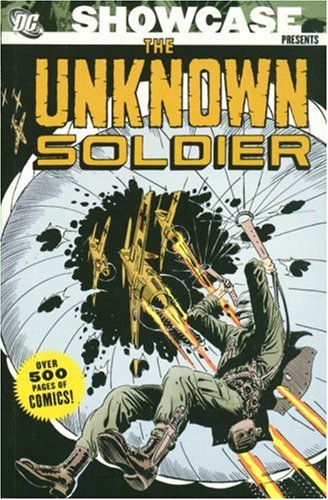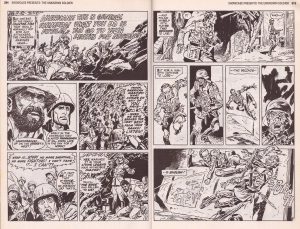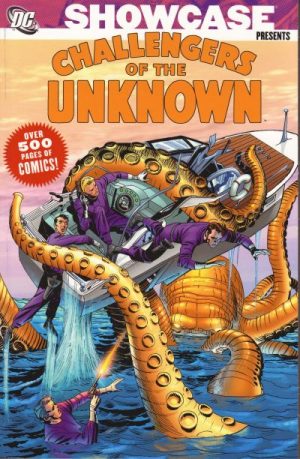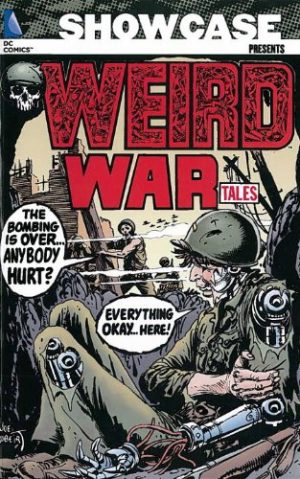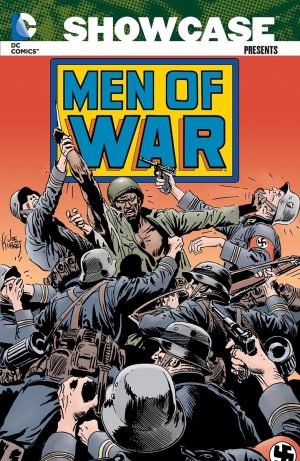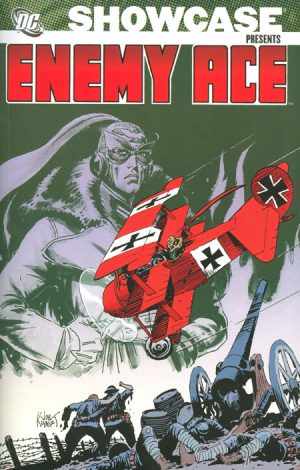Review by Ian Keogh
Introduced in 1970, the Unknown Solider didn’t graduate to his own title until 1977, yet that was largely ordinary while the earlier material tucked away among other war stories in DC anthology titles is largely creative, thrilling and well drawn. It’s what this first Showcase Presents volume supplies in black and white, although given the standard 1970s colouring, that’s no great loss.
Joe Kubert’s responsible for introducing a master of disguise during World War II who takes his name from the tomb at Arlington cemetery representing all American soldiers who died for their country. At first he’s only seen in shadow when not disguised, but when devising an origin, Kubert hit on the masterstroke of also creating the distinctive bandaged face that’s now seen decades of service. Kubert’s stories work, but it’s Bob Haney and Archie Goodwin who cement the feature, providing mystery, bravery and heroism around the idea that a single man in the right place can have a massive effect, while Goodwin’s contributions add strong emotional content. The Unknown Soldier will infiltrate a problematical area in disguise to discover why it’s dangerous for American troops, or will have a more specific mission where his talent for impersonation is more important.
Kubert sets the quality line for the art exceptionally high, especially with some phenomenally dramatic and attention-grabbing covers, but subsequent artists also impress. Gerry Talaoc is extremely under-rated, detailed and expressive, and Jack Sparling (sample art left) may not be highly regarded, but his pages here are solid. Dan Spiegle works closely to Kubert’s style, which is interesting, and it’s only really Doug Wildey on a single story who disappoints, good, but nowhere near as good as elsewhere.
Frank Robbins comes on board late, but eventually writes more of this volume than anyone else. His are decent war stories, but he takes a more sensationalistic approach than before, and it’s sometimes difficult to figure out why the Unknown Soldier needs to be the central character. He also introduces continued stories, and elements of continuity via a Nazi figuring out the same single soldier has a track record of pivotal interference in Nazi missions.
Talaoc (sample art right) is the artist for David Michelinie’s scripts at the back of the book. To begin with, pointing the way toward Vol. 2, these are more generic war stories with the melodrama set higher, but Michelinie improves, varying the moods from thriller to horror. However, the shock of seeing the Unknown Solider without his face bandaged in his opener is a mistake, and not just because, as good as he is elsewhere, Talaoc’s unmasked version is lurid horror. The emotionally drenched tale of a conned priest is very good, but most of Michelinie’s stories aren’t as well crafted as those by Haney, Goodwin and Robbins.
Action is confined to World War II, and because care was taken back in the 1970s, these shorts still read well now, largely realistic, and with an understanding of war being horrific.
